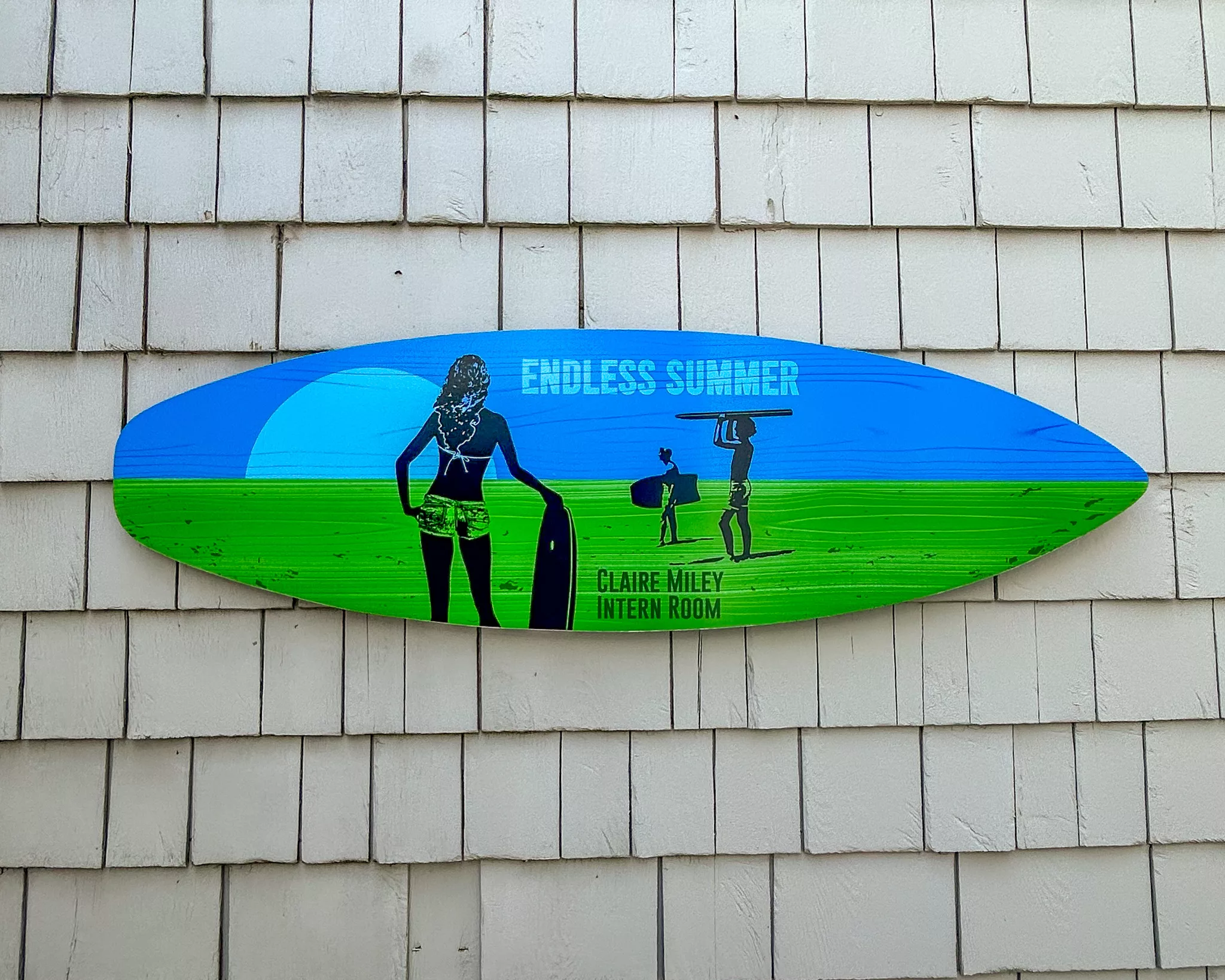The Majestic Beasts of Bald Head Island

By Paul Hillbrand, Sea Turtle Biologist
Bald Head Island is home to a diverse and enchanting array of sea creatures. Among these remarkable marine inhabitants, sea turtles reign supreme. The beaches of BHI are home to 4 species of sea turtle including: the Loggerhead, Green, Kemp’s Ridley, and Leatherbacks, and our surrounding waters are home to the four aforementioned species as well as the Hawksbill. All of which have captivated both researchers and beachgoers alike. Follow along as we delve into the fascinating world of these magnificent sea turtles.
Loggerhead Sea Turtles (Caretta caretta): Loggerheads, named after their large heads and strong jaws, are the most commonly observed species of sea turtles on Bald Head Island. They are renowned for their powerful bite, which allows them to crush and consume hard-shelled prey like crabs and mollusks. Weighing an average of 200-350 lbs. and measuring 3-4 feet in length, loggerheads undertake remarkable migratory journeys, often traversing thousands of miles between their feeding and nesting grounds. Bald Head Island’s beaches serve as important nesting sites for these majestic creatures, as they make up ~98% of the nesting activities the Conservancy records each nesting season. Since 1991, the Conservancy’s Sea Turtle Protection Program has recorded an estimated 2,872 loggerhead nests on the island!
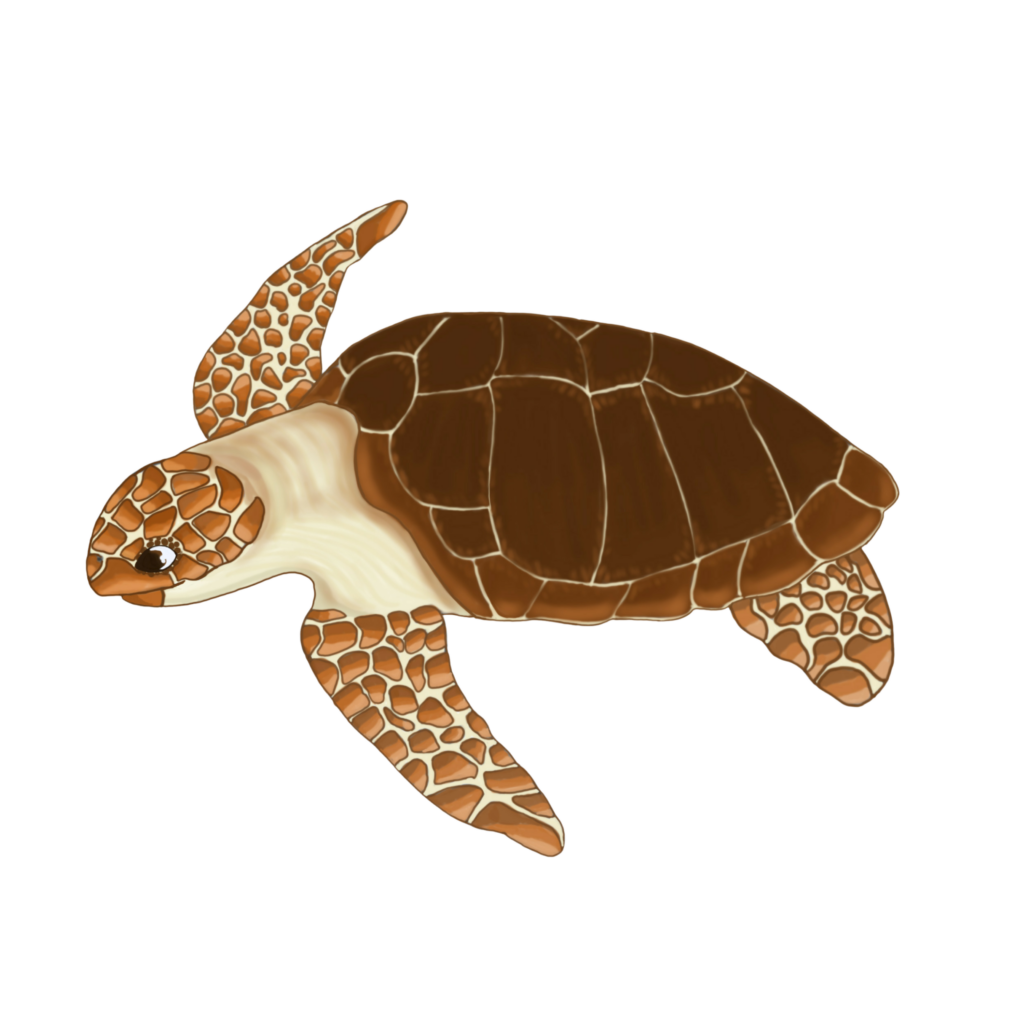
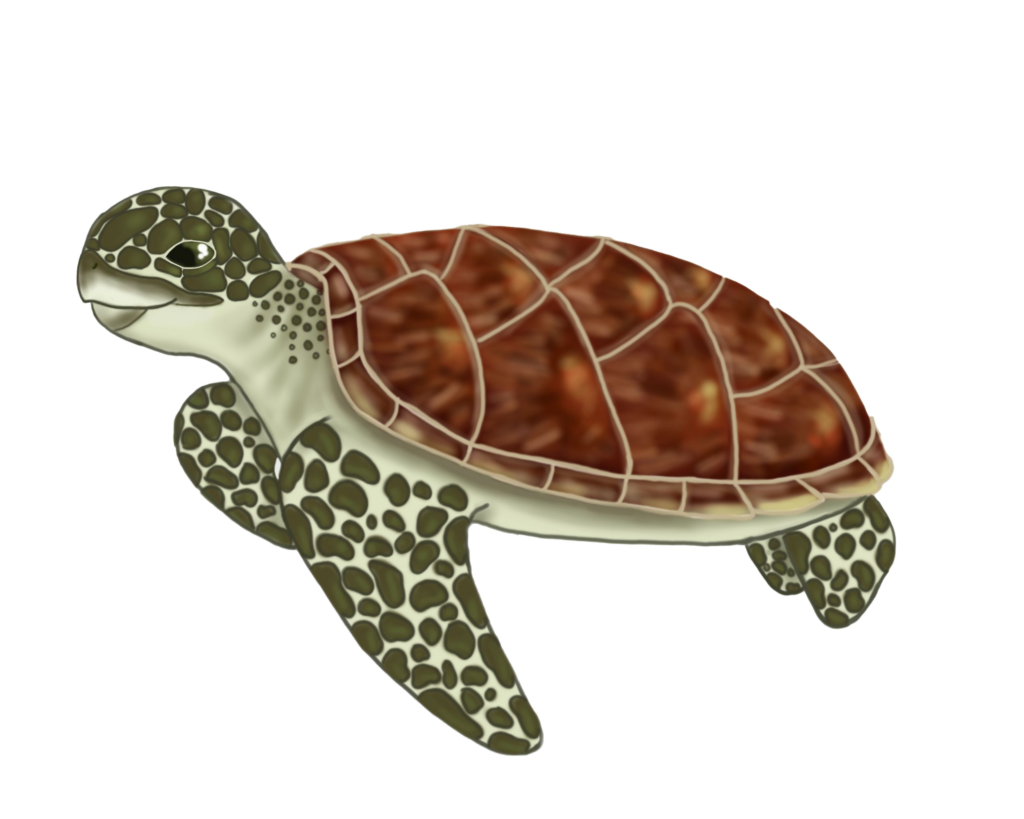
Green Sea Turtles (Chelonia mydas): The enchanting green turtle derives its name from its greenish-colored fat, not its shell! These herbivorous turtles are the largest of the hard-shelled sea turtles, with adults weighing an average of 300-400 lbs and measuring 3-4 feet in length. Their unique diet consists primarily of seagrasses and algae. As herbivores, green turtles help maintain the health of seagrass beds by grazing on them. This feeding behavior promotes new growth, enhances biodiversity, and provides habitat and food sources for various marine organisms, including fish, crustaceans, and mollusks. Since 1991, the Conservancy’s Sea Turtle Protection Program has recorded an estimated 35 green nests on the island!
Kemp’s Ridley Sea Turtles (Lepidochelys kempii): Kemp’s ridley turtles, the smallest and most endangered sea turtle species globally, grace the waters surrounding Bald Head Island. These turtles typically measure around 2-3 feet in length and weigh about 80-150 lbs. They possess a distinctive triangular-shaped head and a predominantly olive-gray carapace. Kemp’s ridley turtles exhibit a unique behavior known as “arribadas,” during which thousands of females gather on certain beaches to nest simultaneously, creating awe-inspiring spectacles. But, along the southeastern coast of the United States, we have solitary nesters. This means that they nest as individuals and do not participate in an arribada or a mass nesting event. The only Kemp’s nest laid on BHI was recorded in 2020 and produced 79 hatchlings!
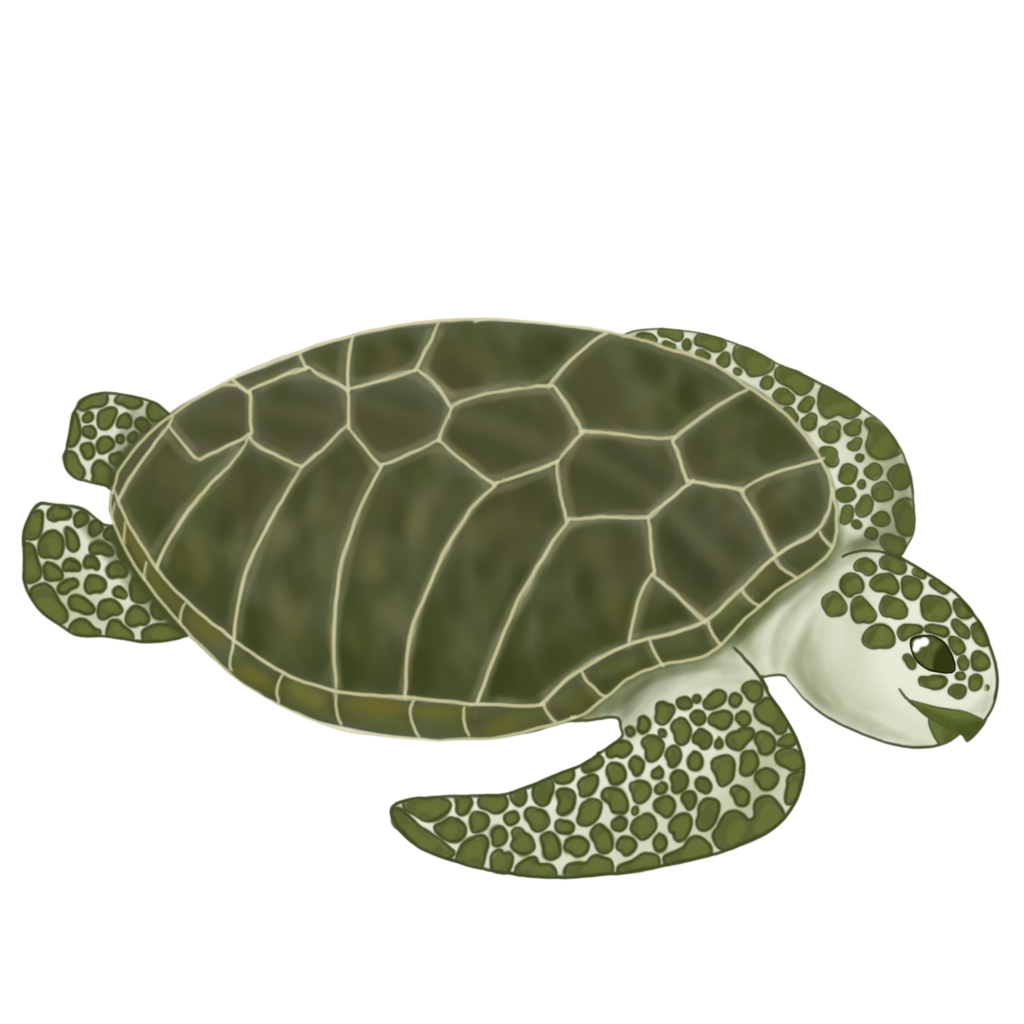
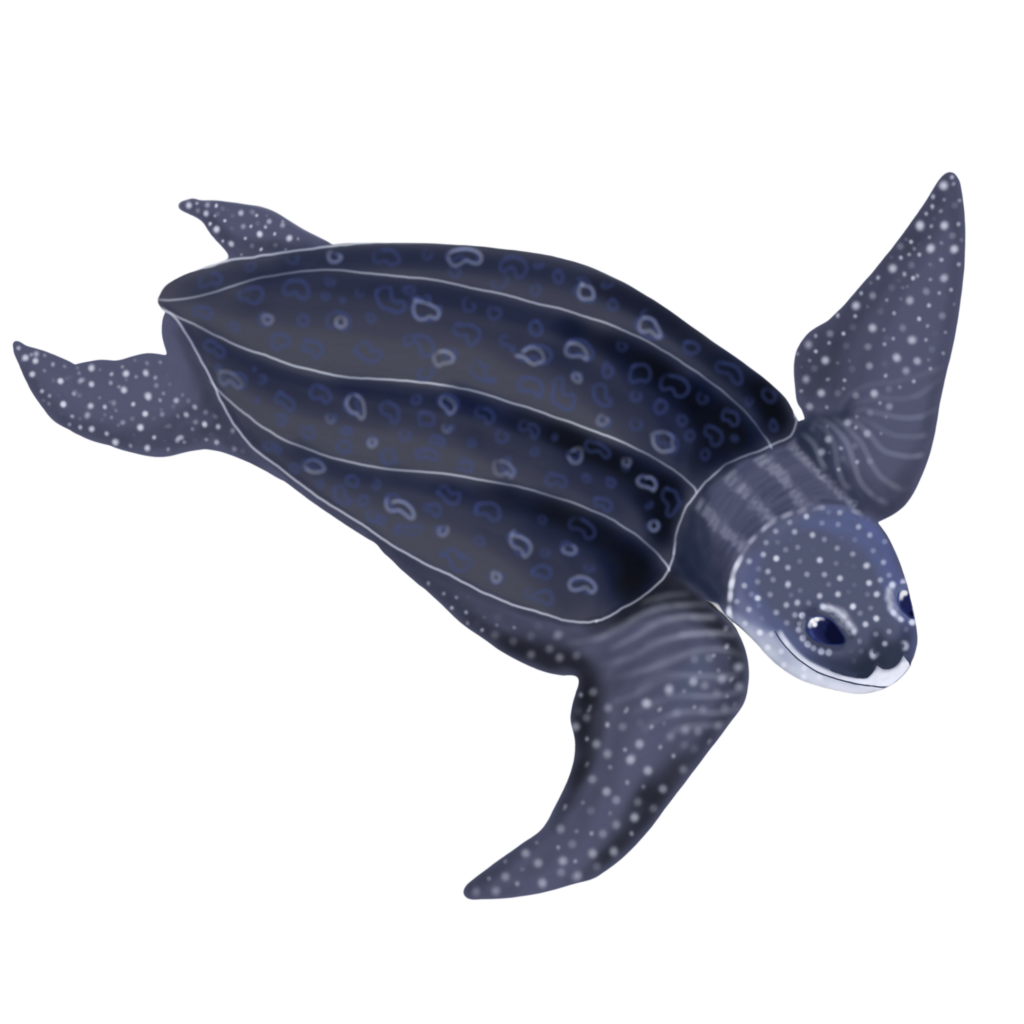
Leatherback Turtles (Dermochelys coriacea): The leatherback turtle, a true marvel of the sea turtle world, can also be spotted around Bald Head Island. Unlike other sea turtles, it lacks a hard, bony shell and instead sports a leathery, rubbery carapace. This adaptation enables them to dive to remarkable depths in search of their favorite prey: jellyfish. With a length of 6-7 feet and a weight of 600-1,500 lbs., leatherbacks are the largest sea turtle species globally. Their impressive size and unique physiology make them capable of undertaking extraordinary migrations across vast oceanic expanses, including the waters around Bald Head Island. The only leatherback nest laid on BHI was recorded in 2010 and produced 59 hatchlings!
Hawksbill Turtles (Eretmochelys imbricata): The hawksbill turtle, known for its stunningly beautiful shell featuring overlapping scales, graces the waters near Bald Head Island. Its shell gives it a distinctive, saw-like appearance. Hawksbill turtles play a crucial role in the coral reef ecosystems as they primarily feed on sponges, maintaining a balanced ecosystem by preventing sponge overgrowth on reefs. Hawksbills are relatively small compared to other sea turtle species, typically measuring around 2-3 feet in length and weighing about 100-150 pounds. Unfortunately, their numbers have declined significantly due to habitat destruction and the illegal wildlife trade.

Bald Head Island’s waters host a rich diversity of sea turtles, including the Loggerhead, Green, Kemp’s Ridley, Leatherback, and Hawksbill species. These remarkable creatures captivate us with their majestic presence and inspire awe with their incredible journeys and distinctive characteristics. As we continue to witness the threats facing sea turtle populations worldwide, it is crucial to raise awareness and support conservation efforts on Bald Head Island to protect these ancient mariners for future generations to cherish and admire. Together, we can ensure the preservation of these magnificent sea creatures and their invaluable contribution to the delicate balance of marine ecosystems. All species of sea turtles are considered endangered in the United States and are protected under the Endangered Species Act.
Sea Turtle Cartoon Images Courtesy of Sea Turtle Week.
Location: P.O. Box 3109, 700 Federal Rd. Bald Head Island, North Carolina 28461 EIN#: 58-1574496
Phone: Office: (910)-457-0089
Email: info@bhic.org
Hours:
- Monday9AM - 5PM
- Tuesday9AM - 5PM
- Wednesday9AM - 5PM
- Thursday9AM - 5PM
- Friday9AM - 5PM
- Saturday9AM - 5PM
- Sunday9AM - 5PM

